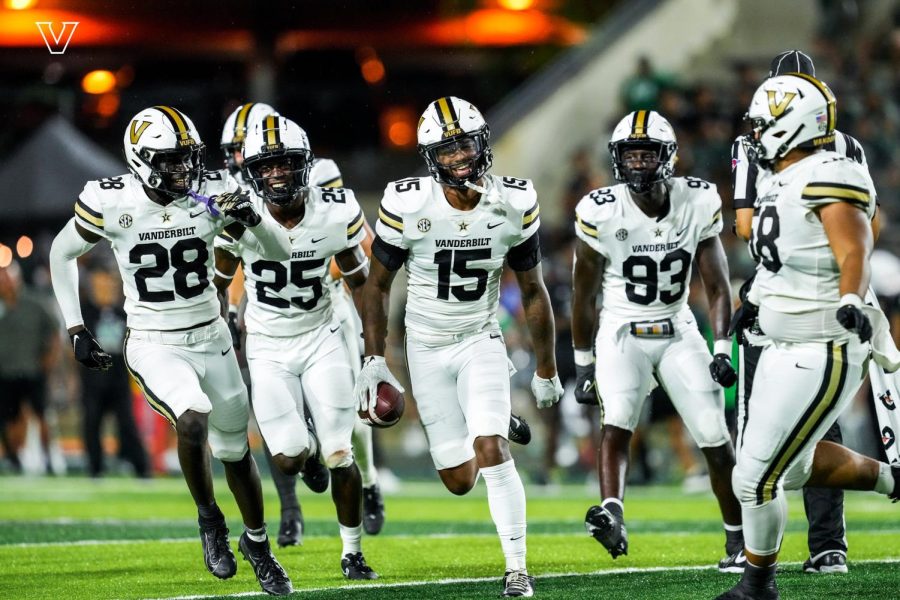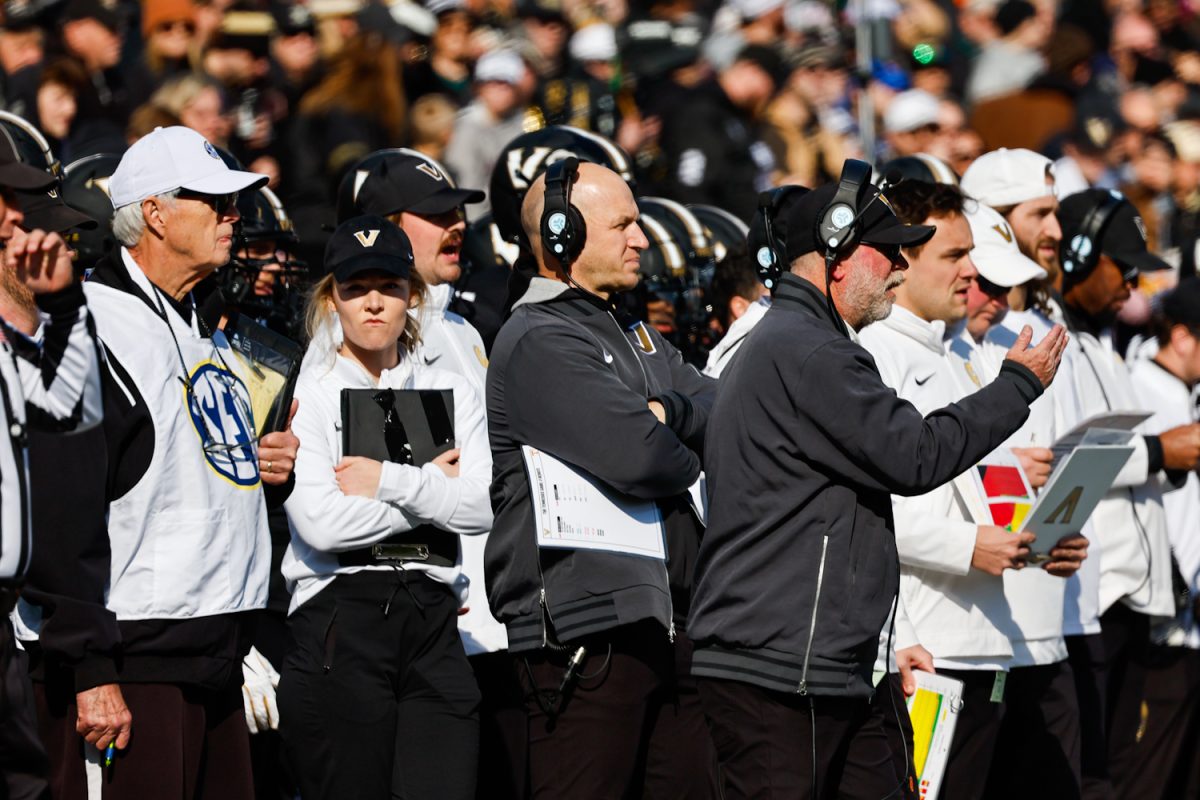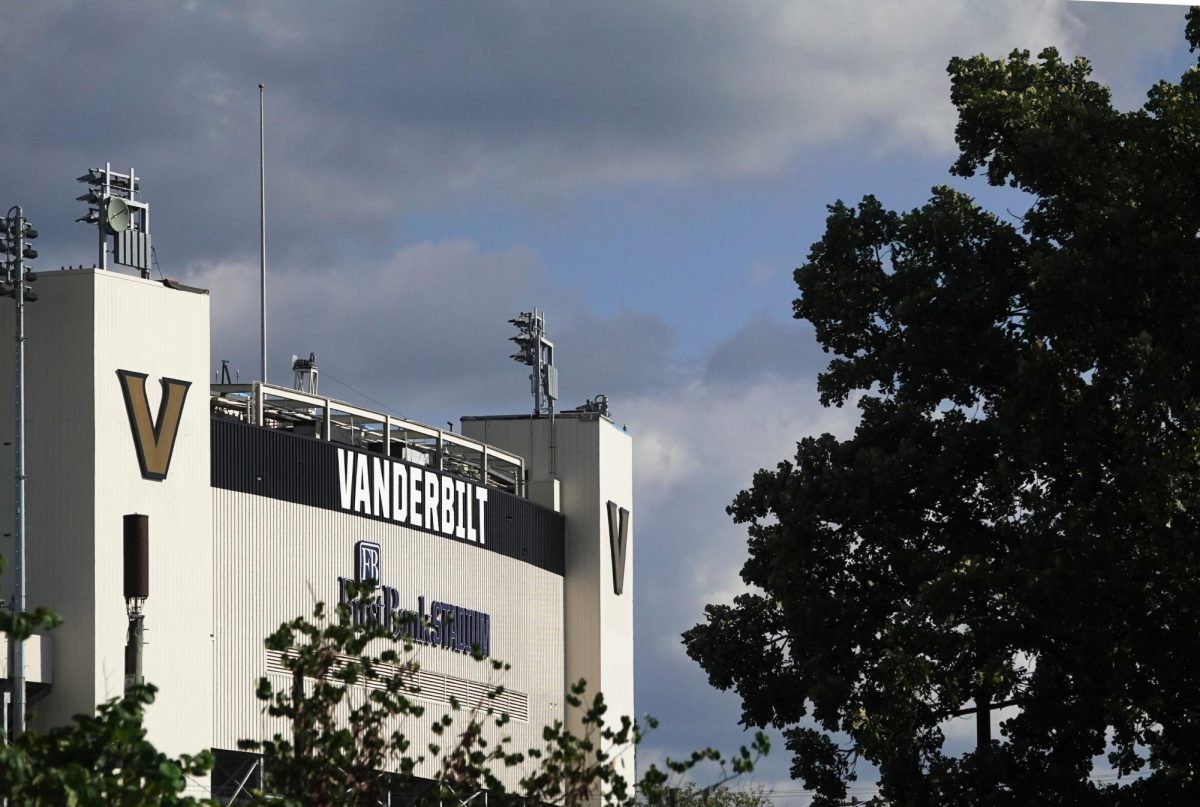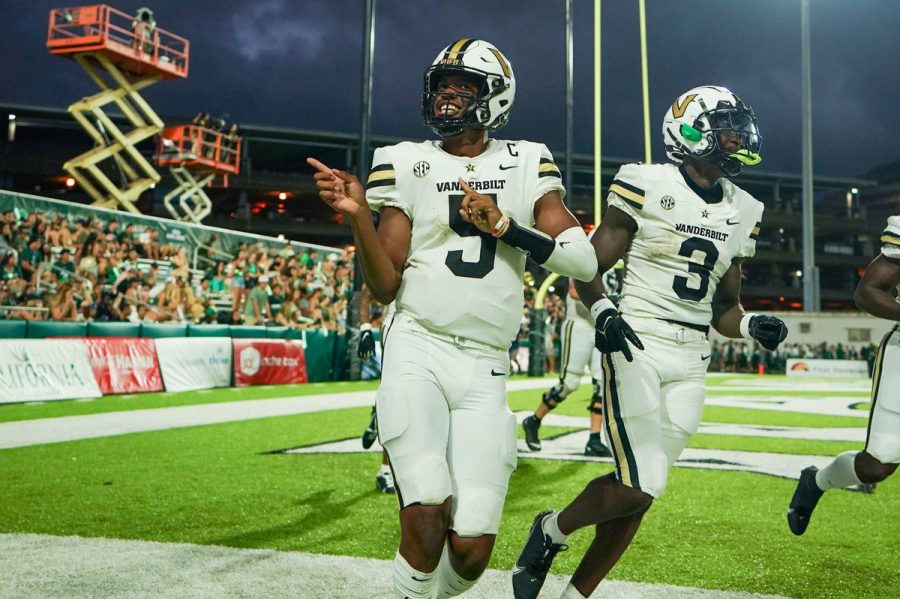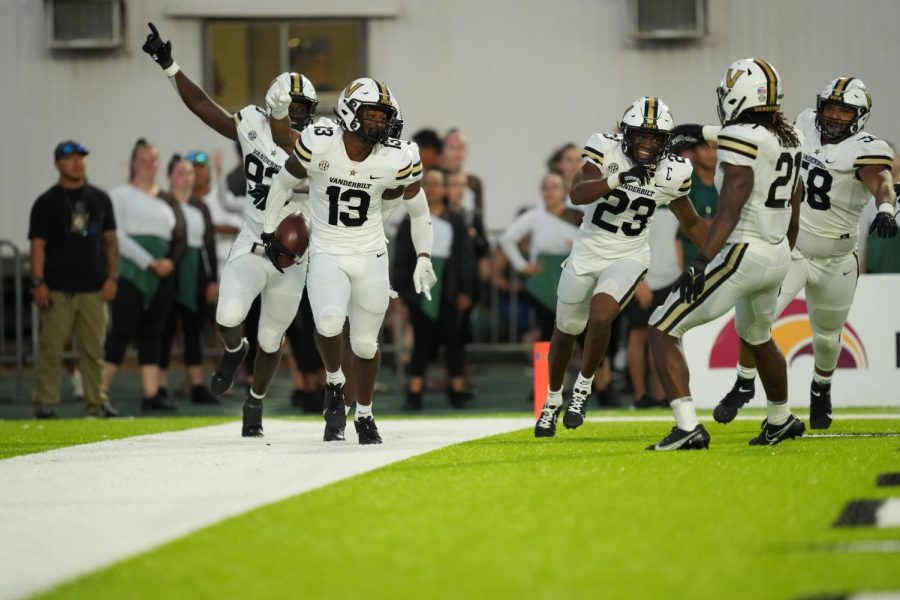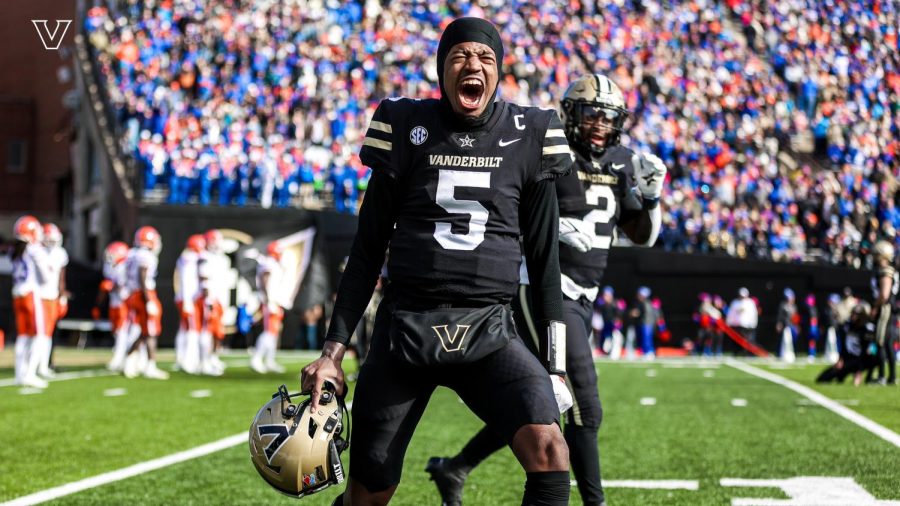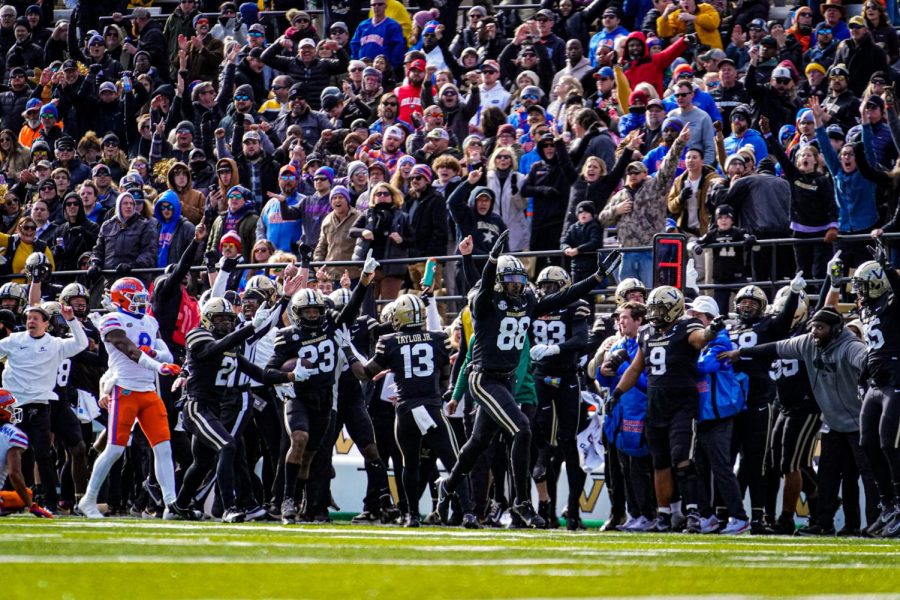It’s been a while since Commodores fans have had something to celebrate after the first week of Vanderbilt football. To be exact, it’s been four seasons since Vanderbilt’s last opening night win, a 35-7 takedown of Middle Tennessee State to start the 2018 season. On Saturday night, head coach Clark Lea’s 2022 squad proved that they are different from the ones of seasons prior. Despite a slow start, the Commodores showed their resilience and quality on both sides of the ball in a 63-10 statement win over Hawaii.
The Commodores’ offense was simply unstoppable on Saturday night. After a Hawaii field goal cut Vanderbilt’s lead to 14-10 early in the second quarter, the Commodores went on to score 49 points unanswered, including 35 in the third quarter, as their rushing attack could not be slowed by the Rainbow Warriors. After winning the starting job over the summer, quarterback Mike Wright showed exactly what he is capable of with a four-touchdown performance.
“He was able to show the things that make him a unique player and competitor. He had a ton of success on the ground and was able to find plays through the air as well,” Lea said of his quarterback after the game. “What’s most important is that he led the offense. He was an emotional connector for us.”
With seemingly so many positives to take from Saturday’s victory, let’s take a look at what Vanderbilt needs to key in on moving forward.
A versatile running game
404 rushing yards. 9.2 yards per carry. Five touchdowns. The Commodores were running all over Hawaii, but it’s important to note how they did it: versatility. As we discussed last week, Vanderbilt has two running backs on their roster who bring different skill sets to the table in Ray Davis and Rocko Griffin. On Saturday night, offensive coordinator Joey Lynch combined the talent in his running back room with an elite athlete in quarterback Wright to create a dynamic rushing attack.
The offensive game plan for the Commodores was established early, with the team running the ball on six of their first 10 plays from scrimmage. Vanderbilt excelled on the ground due in large part to how they played to the strengths of their running backs. Specifically, Lynch utilized Davis on more spread running concepts, where he could showcase his speed, and tailored Griffin’s rush attempts to inside zones, where Griffin could better utilize his vision and quick-burst acceleration. Additionally, both Davis and Griffin were rotated frequently throughout the night, keeping their legs fresh and the pressure on Hawaii’s defenders constant. With both players being runners of stout, strong frames, the rotation and playcalling from Lynch allowed the pair ample opportunities to break tackles and earn chunk plays for the Commodores, fueling their offense. Combined, the pair rushed for 150 yards and 2 touchdowns. Expect this two-headed attack to be called upon frequently in the coming weeks.
The next piece of this discussion has to revolve around the Commodores’ leading rusher on the night: Mike Wright. The junior quarterback rushed for 163 yards and 2 touchdowns on the night, with his performance highlighted by an 87-yard scamper up the sideline for a touchdown in the third quarter. Wright operated as a true dual-threat quarterback on Saturday, with the same number of pass completions as rush attempts (13). Yet, what really stood out about his performance was how he got those carries: through a large mix of designed plays. Rather than using Wright’s rushing ability as a backup plan on passing plays, Lynch emphasized using Wright’s feet as a direct weapon. Wright succeeded all night long with Lynch dialing up RPO’s (run-pass option) and triple options, which he executed to perfection. This quarterback-led running attack isn’t going anywhere as the Commodores try to replicate this performance on the ground throughout the season.
And, of course, no discussion of a running game is complete without mention of the 10 other players on the field executing the scheme. The offensive line was terrific all night, opening up holes for their backs and moving laterally extremely well in Lynch’s horizontal rushing attack.
The play of the night for me, however, came from wide receiver Will Sheppard. It wasn’t either of his receiving touchdowns, but rather, it was his blocking on Wright’s 87-yard touchdown. Sheppard started the play on the outside and sealed a lane for Wright on the edge, before slipping off his assignment and blowing up another Hawaii defensive back to spring Wright down the sideline. For a team looking to find its new identity on the offensive side of the ball, Lea couldn’t have asked for a better sign of his team’s commitment.
Flying to the ball
For a team that did not score a single defensive touchdown last season, Saturday night was a welcome sight for Commodores fans. The blowout victory featured two defensive touchdowns for the Commodores: a 28-yard fumble return TD in the first quarter by Anfernee Oriji and a 14-yard fumble return TD from CJ Taylor in the third quarter. On Saturday night, the Commodores were doing something that Lea emphasized all summer long: flying to the ball on defense. Vanderbilt was quick to read-and-react on Saturday, plugging up their run fits and rallying to tackle all night long.
Another bright spot for the Commodores in a great victory was their secondary’s performance. A unit that was a weakness for Vanderbilt last season, the secondary was all over the Rainbow Warriors’ passing game, forcing Hawaii head coach Timmy Chang to default to the run game even as Vanderbilt’s lead grew. In the end, Vanderbilt limited Hawaii’s quarterbacks Brayden Schrager and Joey Yellen to a combined 50.9% completion percentage, no touchdowns and a 24.9 QBR on the night. After lackluster performances last season, Vanderbilt’s secondary showed up in a big way on Saturday night.
As we know, not every week can hold the same fate for the Commodores as this 53-point win. Yet, Saturday’s game showed some changes to Vanderbilt football and schematic flexibility that we have not yet seen in the Lea era. With a truly dynamic quarterback-led running game and a seemingly re-energized defense, it remains to be seen if the ceiling on the Commodores is just a bit higher than what we had expected coming into the season. On to Week 1.

